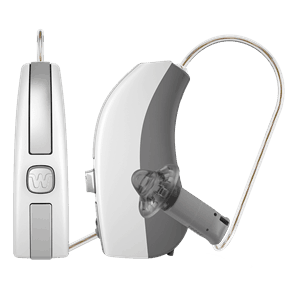When the microprocessor was created in the 1970s, miniaturization might be required to a whole brand-new degree. Fifty years from currently, who knows what listening devices will certainly look like, or indeed, if we will certainly even be utilizing listening devices after that due https://canvas.instructure.com/eportfolios/965953/claytontfzu021/Unitron_Listening_Devices to breakthroughs in hair cell regeneration and other clinical advances. It might be that already hearing help will certainly be vanished as well as the only locations you will certainly see them will be in museums such as The Hearing Aid Gallery.
Listening device have had quite a colourful history to say the least. From innovative innovation which transformed the method we listen to, to some suspicious innovations-- the advancement of hearing gadgets over the years has been just one of much trial and error. Aurex Corp in Chicago developed the initial wearable listening device in 1938. In this original wearable version, there was a thin cable attached to a little earpiece along with an amplifier-receiver that the wearer attached to their clothes.
- The initial all-digital listening devices was established by Oticon in 1995 as well as shown to audiological laboratories for further research.
- These sound levels were attained due to the fact that vacuum tubes managed the circulation of electrical energy much better than carbon.
- Medieval individuals fashioned primitive hearing gadgets from animal horn, study recommends.
- First, the vacuum tube style was enhanced with miniaturization.
In the 1920s vacuum-tube hearing help were produced; these tubes were able to turn speech into electrical signals and then the signal itself was intensified. Thomas Edison, that experienced hearing loss himself, additionally created a carbon transmitter which was later on utilized as the basis for carbon hearing aids. Another hearing instrument specialist and inventor at the time, Louis Weber, produced the Esha-Phonopher. This electric design in 1911 eventually influenced the creation of the listening devices producing business Siemens.
Click To Change Message Dimension
The transistors were smaller than vacuum tubes and used less battery power. Hearing aids that utilized transistors were state-of-the-art up until they were changed in the 1970s by the next large thing. Initially, the vacuum tube design was improved with miniaturization. By 1937, the first wearable vacuum cleaner tube listening device were available in the united state . He used a carbon transmitter as well as an electrical present to raise the toughness of the signal. It had not been up until 1913 that the initial readily made electronically-amplified listening device were created by Siemens, a business that remains to produce hearing aids today.
More Hearing & Equilibrium Resources

In 1948, vacuum tubes were replaced by transistor hearing help. These brand-new tools called for much less battery power, were smaller sized, as well as produced less audio distortion. The very first company to begin commercial production of the ear trumpet was established by Frederick C. Check London in 1800. As well as generating ear trumpets, arizona hearing specialists tucson Rein additionally sold hearing fans, as well as talking tubes. These tools assisted amplify sounds, while still being mobile. However, these tools were typically large as well as had to be physically supported from what is wet earwax listed below.
1952: Vacuum Cleaner Tube Innovation

There is also wireless connection that syncs to wise devices to improve audio. As the 1980s reoccured as well as silicon came to be the primary product for transistors, the versatility and transportability of listening devices proceeded definitely. 1996 saw hearing aids make the upgrade to the type we understand today. Miller Reese Hutchison developed the initial electrical listening devices in 1898.